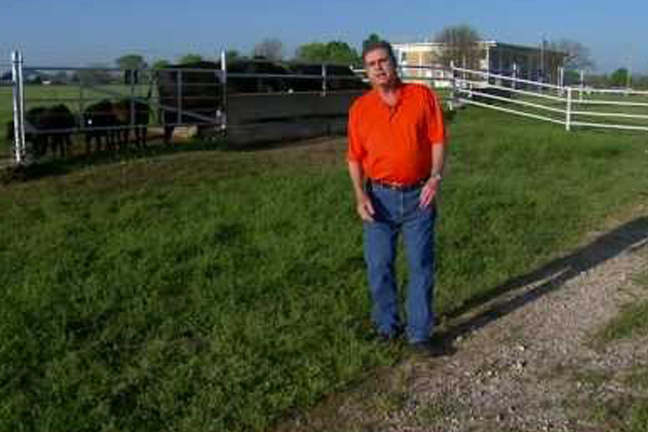
Agricultural News
Selk Offers Tips for Dealing With Wet Hay and Preventing Hay Fires
Thu, 28 May 2015 11:27:26 CDT
 Glenn Selk, Oklahoma State University Emeritus Extension Animal Scientist, writes in the latest Cow-Calf Newsletter.
Glenn Selk, Oklahoma State University Emeritus Extension Animal Scientist, writes in the latest Cow-Calf Newsletter.
After several years of drought, rain in Oklahoma is allowing cool season forages to grow in abundance. Harvesting and baling cool season crops such as fescue and wheat hay is a challenge during a wet spring. The timing of the rains can make it difficult for cattlemen that are trying hard to put quality hay in the bale for next winter's feed supply. All producers that harvest hay occasionally will put up hay that "gets wet" from time to time. Therefore, ranchers and hay farmers need to understand the impact of "wet hay" in the tightly wound bales.
Extra moisture in hay can cause heat inside the hay bale or hay stack. Heat produced by the bale comes from two sources: First) biochemical reactions from plants themselves as hay cures. (This heating is minor and rarely causes the hay temperature to exceed 110 degrees F. Very little if any damage occurs if the hay never exceeds 110 F.); Second) Most heat in hay is caused by the metabolic activity of microorganisms. They exist in all hay and thrive when extra moisture is abundant. When the activity of these microbes increases, hay temperature rises. Hay with a little extra moisture may not exceed 120 degrees F., whereas, wetter hay can quickly exceed 150 degrees. If the hay rises above 170 degrees, chemical reactions can begin to occur that produce enough heat to quickly raise the temperature above 400 degrees and the wet hay can begin to burn and cause fires. Be wary of the fire danger of wet hay and store it away from buildings and other "good" hay just in case this would occur.
Heat damage causes hay to be less digestible, especially the protein. Heat damaged hay often turns a brownish color and has a caramel odor. Cattle often readily eat this hay, but because of the heat damage, its nutritional value might be quite low. Some ranchers have reported that "the cows ate the hay like there was no tomorrow, but they did very poorly on the hay".
Testing wet hay may be very important. Determining the internal temperature of large bales or stacks of hay should be done carefully. Make certain that checking the temperature in suspicious hay is done safely. Read the E-Extension Fact Sheet "Preventing Fires in Baled Hay and Straw", by clicking here.
Testing the protein and energy content of stored wet hay will allow for more appropriate supplementation next winter when that hay is fed. Moldy hay could be a source of mycotoxins that could present several health problems for cattle. Many animal disease diagnostic laboratories can examine feedstuffs for mycotoxins or can recommend laboratories that do such testing.
WebReadyTM Powered by WireReady® NSI
Top Agricultural News
More Headlines...




















